-
Posts
4,746 -
Joined
-
Last visited
-
Days Won
119
Content Type
Profiles
Forums
Resource Library
Events
Gallery
Blogs
Store
Community Map
Posts posted by Mayner
-
-
Now that's what a railway SHOULD look like! Ye can keep your railcars!
Good to see accurate rendition of both the earlier dark green and the later lighter green, especially the darker on the A; only a very few got this treatment, the vast bulk of them being the lighter green like B101. (I believe A46 was the first dark green A, and there were only 2 or 3 others in dark green; maybe they found old paint, because when any "A"'s were repainted from initial silver, the dark green livery was by now only used on buses - anything green on the railway was the lighter colour).
Also, a very typical feature of the period which I don't think I've seen on a model before is the older wooden coach in the pre-1955 dark green with full light green lining, along with newer carriages in the post-1955 mid green with simplified light green lining.
It's easy to see how "odd", and "foreign" the new 121s seemed in that setting.
cattle trucks everywhere - absolutely standard in those days, and almost obligatory for a late 50s / early 60s CIE layout - as are "C" class locos.
Excellent work.
There is a great John Langford colour photo of a BUT railcar set on the 7:25 Westland Row passenger at Macmine Junction in June 1962, every vehicle in the set is in a different livery!
The train is lead by a single ended BUT car c904n in the later CIE lined green, followed by a GNR brake 3rd in blue and cream, followed by a BUT railcar in black and tan, the fourth vehicle appears to be a 4w TPO in the unpainted aluminium livery.
The train is at the Rosslare end of the Waterford platform and what looks like a diesel loco and coach are just about visible at the Northern end of the platform. Its possible that the railcar and loco hauled 10:00 am Wexford-Waterford passenger have drawn into the same platform to exchange mail and parcel traffic or possibly attach a parcel van with traffic for New Ross and Waterford.
-
I've had a look and on first glance it appears that there are indeed two wagons sharing the exact same upper proportions, but the under frame of 9'6" is akin to something 60 years earlier. Everything about the numbers screams "wrong" to me.
The old ballast hoppers introduced in 1903 were 9'6" wheelbase, a standard that was regular then. page 66 8415-8422. I reckon it was GSWR hoppers renumbered , but the one shown as the photograph is an oddity all right.
And just for fun I did changed the CAD on the ballast to have a 9'6" wheelbase, as opposed to 12" wheelbase, and it's positively funny. A full hopper would fall over even half full.
There is NO way that the ballast wagon we are producing, ever ever had a 9'6" wheelbase,
Perhaps J Stadt could shed some light on this?
R
Both the GNR and CIE built 20ton Gypsum Hoppers of broadly similar design in the 1940s & 50s. Both types of wagon ran on a 9'6" chassis of similar design to ballast wagons introduced in the early 1900s. Diagrams of GNR ballast & gypsum hoppers and plough vans appeared in the Nov 2008 IRN
I have a faint dyeline print of a CIE general arrangement drawing for a 20 ton Gypsum Hopper dated 9/7/53.
The GNR built 6 wagons 6015-6020 in 1944, CIE appear to have built 4 wagons 23963-66 in 1953.
The main difference between the CIE and the GNR wagons seems to been that CIE used a short 16' underframe compared to 18' on the GNR.
-
Like the UTA in Northern Ireland, CIE had a near monopoly of surface transport in the 50s & 60s. It was almost impossible to obtain a road haulage license, a business had the choice of using CIE or buying their own trucks.
Moracrete had a fleet of grey dropside Comets with drawbar trailers for delivering concrete pipes and blocks from their Crumlin factory, as a child the factory was one of the highlights on a journey on the 50 Bus to town or to visit relatives.
-
Price the loco are more likely to be assembled from cast metal parts to speed assembly than brass. Wheels, motor gears alone would cost around £80 a professionally assembled brass or whitemetal kit for a similar loco would cost around £500.00
RM Web Thread on OO Works locos http://www.rmweb.co.uk/community/index.php?/topic/41670-who-are-oo-works-and-what-do-they-make/
Ian Js July 2011 post indicates that the Southern "Black Motor" was assembled from "heavy metal parts" and that the only plastic part used was the tender top.
Its possible that OO Works have gone for a Irish loco as a rtr manufacturer of commissioner is unlikely to bring out a U or UG, several locos in the OO Works back catalogue are available in rtr form including the Southern Arthur, SECR C, LSWR Radial and 700 Class.
-
Kevin
You would be better off with the Dapol kit rather than the rtr model for the conversions. There are photos and links to articles showing what's involved on the JM Design Facebook page https://www.facebook.com/jmdesignmodelrailways.
You basically need to remove all raised detail from the coach body before cutting out the window openings, leaving a thin strip of plastic along the top to attach the roof.
There are two schools of though about building coach bodies one is to glue the roof to the body before removing the floor and cutting out for the window openings, the second is for a removable roof.
The glazing is best discarded apart from a thin strip along the top which can be used to secure the roof. Two sets of interiors are required to complete the corridor second, seating for open coaches can be purchased from suppliers like Comet, Ratio and Southern Pride.
The coach sides were 'shrunk to fit" the Dapol shell to avoid distorting the proportions of the coach which works out at 1:74.1 or 3.9mm Foot not a serious issue when the modelling Irish Broad gauge on 4'1½" gauge track.
-
 1
1
-
-
Birdhill-Roscrea is very interesting from a signalling perspective. The morning Limerick-Ballybrophy train divides in mid section at Nenagh with the rear portion returning to Limerick as a commuter service.
Trains that divide at Nenagh carry a banking staff in addition to the Birdhill-Roscrea ETS to allow the train to divide in midsection and allow the Limerick commuter train to return to Birdhill.
The release of the banking staff is controlled by modern industrial safety interlock switches interlocked with the ETS instrument in Birdhill and Roscrea cabins.
-
If you want something a bit different model the loco in mid 1930s virtually same as the English locos apart from the grey livery, name plates no smoke deflectors . No need to change the smoke box door or other CIE modifications. Bachmann or Dapol LMS corridor coaches would almost pass for a GSR mainline set in the new Maroon livery
-
Well done Kevin for spotting this one the first enquiries after nearly two years !
I will have a look at the figures, but the cost of an individual body may be high as I would need to spread the tooling costs across a small number of enquiries.
-
http://forum.signalbox.org/viewtopic.php?f=7&t=6953 appears to be a reasonable summary of the current situation
Cork(possibly), Waterford West, Clonmel, Birdhill, Roscrea.
The Cherryville Junction-Waterford CTC scheme excluded Waterford West which controls the junction between the Waterford and Limerick Lines, connection to the goods yard and the now single running line to the passenger station.
It might be worth while contacting Oliver Doyle of the IRRS and a senior IE operations manager for further information, he published several IRRS papers on mechanical signalling and CTC including the Waterford Line Mini CTC scheme in IRRS Journal http://www.irrs.ie/Journal%20154/154%20Waterford%20CTC.htm
-
Seems to be a tractor and draw bar trailer arrangement possibly for un-sealed roads, wonder if they were any built in that format.
There are some interesting photos of GSR lorries and busses in Donal Murray's book including a 1934 Leyland 4 ton twin rear axle dropside with removable side extensions and upper livestock deck. The twin rear axle and high ground clearance may have been for use on un-sealed roads
-
That wouldn't be for the faint hearted, Mayner.... can you imagine the health and safety police nowadays, if the driver of the Galway to Clifden ICR reported seeing such a thing!
Even in Ireland the railway has no legal duty to trespassers, but families, local politicians and coroner would be calling for blood if anything happened.
-
Looks like a perfect next 7mm project for David complete with MGWR locos and coaches. Probably no turntable and minimal loco facilities because of the short distance from the facilities at Westport station.
The harbour siding does not appear to have extended to serve the warehouses and grain elevator on the quay.
Crew protection in the case of a collision was one of the main factors in favour of long hood forward running of diesel locos on some American Railroads and the retention of short hoods on the majority of American diesels.
One of the oddities in recent years was that crews began turning newly introduced double cabbed locos at the terminus of a central North Island line in preference to changing ends and driving in a cold icy cab until the heating kicked in.
-
Good morning, Noel,
The BSGV overlays are priced at $53.00 NZ +$10 postage (approx. £22 Stg + £4.5 postage) The $NZ has taken a tumble in recent months which results in a real reduction. I think the other are similarly proced. I'll check later
COuld you post that link to Kieran's build on the RMWeb site please?
To avoid confusion I am not planning to re-stock the coach sides at this stage.
I can supply coach sides to individual customers directly from the engraver subject to a minimum order.
Buffet Car 1 set sides
Side Corridor Standard -2 sets sides
Standard Open, Brake Standard Open, BSSGV -3 sets sides
I will need to quote on each order, the supplier is in the UK prices to EU customers are subject to UK VAT. Shipping costs for small orders from the UK works out higher than from New Zealand thanks to the McDonalds exchange rate.
I have no problem with an individual customer such as Dive Controller placing an order for a group or on selling surplus items but the person who places the order will need to sort out pricing and shipping with individual members of the group.
-
 1
1
-
-
Iain Rice did a scheme for a layout based on Westport Quay in one of his railway planning books and also incorporated the basic track layout into a freelance Scottish harbour setting.
The station layout was on a curve and a down grade towards the buffers, with the harbour siding dropping steeply to cross the road. The siding appears to have ended at a loading bank shown on JHWs diagram, but could be extended to curve around to run along the quay with a G or small industrial to take over from the main line locos
In latter years the line seems to have been used mainly for stores and oil traffic to the CIE bus depot beside the station and was lifted in the late 70s, before that it would have served a similar function to Fenit serving as a port for Coastal Shipping to County Mayo & Rocommon imported corn, coal, timber, exporting cattle
IRRS Journals has a fine colour photo of a 001 in Supertrain livery shunting a 4w flat with an Orange CIE 20' container and a tank wagon with Croagh Patrick in the background.
-
Now this is my recollection of beet trains ( I presume the A has failed in the first train )
Great find the loose coupled beets could load to 55 wagons 780 tons between Campile (which acted as a marshalling yard for loaded bet trains) and Limerick
Container wagons appear to have been regular Limerick-Waterford passenger trains including AEC railcars into the early 70s, the traffic possibly meat or dairy products for export through Waterford or Rosslare. Oliver Doyle wrote about heavy traffic in bacon carried in BR insulated FM wagons from Waterford.
The B141 taking the Ballinacourty line with the short goods train is an interesting one, was she simply shunted to clear the Limerick line for a service train or a trip working to Waterford Iron Founders siding at Waterford West.
The line across the viaduct to Grace Deiu Junction remained open for traffic to and from the foundry following the closure of the Waterford-Mallow line in 1967, the traffic ceased and the junction removed by the late 1970s
-
Reminds me of when I was living in Scotland about 20 years ago, we had a heavy snow fall after Christmas and went out for a drive one as far as Killin out by Callander and home via Lough Tay and Perth. Beautiful cold sunny afternoon, cross-country skiers out in the hills by Lough Tay.
Snow was gone the following morning with a sudden thaw washed a viaduct on the Glasgow-Perth main line near Glen Eagles closing the line for the best part of 12 months
-
John, I was wondering how these were progressing/whether they are still available or sold out?
All coach sides are sold out and I have no plans at this stage to re-stock.
Due to the design of the tooling there is a minimum order of 3 sets of sides for the BSO, BSSGV & SO for supply by special order direct from the engravers.
-
Finding a suitable battery to power Erin turned out to be less of a challenge than expected. I managed to pick up a 14.8V 1400 mah Li-Poly battery that fits in Erin's boiler without too much surgery.
I originally wired the loco up with a charging jack and switch gear in the cab with the intention of charging the battery in situ or power the loco from a battery in a trailing car a fairly common G/large scale arrangement
 Usually I hid the switch behind a panel or under a tender but there was no room on this small loco, the radio receiver is on the left of the cab and is about the size of a HO or small O gauge DCC decoder.
Usually I hid the switch behind a panel or under a tender but there was no room on this small loco, the radio receiver is on the left of the cab and is about the size of a HO or small O gauge DCC decoder.Its not a good idea to charge a Li-Pol battery inside a plastic loco, the boiler is removable to allow the battery to be removed for charging. Most of the wiring is redundant I will replace the RCS switch gear with a simple DPDT switch, remove the charging jack and fit a poly switch to protect the battery, I have fitted a low battery voltage alarm.
Erin looks very small coupled to Bachmann American 1:22.5 scale equipment both Erin & the Bachmann coach are underscale for 3' gauge and overscale for 3'6" Cape and NZ Gauge. The coach was recently re-painted from green into maroon using a motor spray enamel, the railway has one other coach which may appear in a shabby purple lake or rebuilt into one of those GMC gas-electric Doodlebug things.
Erin's visit to the shops is tied up with a New Year resolution to complete a large backlog of unfinished projects starting with the G Gauge ones as they seem to take up the most time and space. Next in line air reservoirs and plumbing for a pair of tender locos.
Erin has worked a few trial trains. Next stage is to build a new cowcatcher for the front end sort out the wiring and tidy up the paint work.
I have tried cleaning a section of the boiler with enamel thinner while the varnish/weathering cleans off fairly easily the underlying paintwork (possibly motor enamel) appears to be good.
Does anyone know if removing the varnish and weathering with enamel thinner is an option or whether a fresh coat of varnish would work
-
My father lived near the Salmon Weir bridge in Galway just before the Clifden line closed, he had little interest in railway but often spoke about a girl that often walked the top of the steelwork of the Corrib Viaduct. http://www.realizedvision.com/railways.php
The GSR offered the viaduct to the city or county for a £5, but the local authorities were not prepared to take on the liabilities and the viaduct was dismantled.
-
Thanks Ive been in correspondence with Martin Wynne ( of Adavoyle fame) and they used PECO code 65 rail as described here http://www.peco-uk.com/product.asp?strParents=&CAT_ID=0&P_ID=17542'>http://www.peco-uk.com/product.asp?strParents=&CAT_ID=0&P_ID=17542
and used on adavoyle junction
[ATTACH=CONFIG]22156[/ATTACH]
( © Martin Wynne
This must be different to the PECO rail discussed in the previous thread ??[/quote
My sample and Adavoyle seem to use Peco Code 60 conductor rail http://www.peco-uk.com/product.asp?strParents=&CAT_ID=0&P_ID=17542
I would suggest contacting Peco directly info@pecobeer.co.uk to establish if they manufacture a Code 65 rail section
-
To go back to the thread topic, it was mom on practice in the past for steam engines to pre-heat coaches.
UTA / NIR loco-hauled stock from the late sixties on tended to lie aside for long periods, and my memories of them included tired of vandalised upholstery in some, and another occasion a slashed seat cushion with the old horsehair coming out, but above all very musty. No amount of heating can remove mustiness for old, damp, cold cushions.
But if near the engine they were toasty warm.
Before the fixed formation train era the GSR & CIE had very low carriage utilisation by modern standards, a high proportion of carriages would have spent most of their working lives in sidings and were only used occasionally to strengthen scheduled trains or when required for excursions or specials.
There was a report in one of the Fayle's Journals of passenger complaints and delays when damp/wet coaches were used to strengthen Broadstone-Galway/Mayo trains carrying cross-channel passengers. Passengers (tired and sleepy) had to detrain so that porters could sweep/mop the water out of the carriages.
-
-
Looking at these pics I would say that it arrived from Waterford with 134 leading. It came off the Waterford line and pushed the train into the junction where the locos were uncoupled, ran around and re coupled at the Mallow end with 144 becoming the lead loco.
[ATTACH=CONFIG]22134[/ATTACH]
[ATTACH=CONFIG]22135[/ATTACH]
Rich,
I had to do a double take when I saw the photo, I chased a similar consist with 129 & 142 from Waterford to the Junction on the 2002 Oct Holiday weekend!
The locos propelled the train from the Limerick Line onto the North platform road before running round, further shunting took place with the Beet shunted to the Down Main line to free up the platform roads for up and down passenger trains.
Ten years earlier during an acute loco shortage single headed 121s worked two fertiliser trains out of Cork on a summer Saturday afternoon, before the 17:30 Dublin Passenger, the 1st made it to the Junction the second to Rathpeacon before being shunted clear of the main line for the passenger.
Apart on the ban on long hood running the Straffan p.w. bogie collision lead to one of the 1st modifications to the class the fitting of louvers to the cab doors.
-
They'd have been better off buying up some of the SR N1 class - the same as N's but already 3 cylinder. What would be the advantage of using a bogie anyway? Apart from adding a couple of tons to the front end.
The GSR proposal to re-build the Woolwich into 4-6-0s seems to been for similar reasons to the GWR decision to rebuild 100 4300 Moguls into Grange and Manor Class 4-6-0s, to improve stability at speed by fitting a bogie and increase boiler power by fitting a larger boiler.
"Primarily goods engines but suitable for passenger trains. They work Galway passengers but are too overloaded to run fast. The boilers are to the British gauge (loading) and are too small for Irish requirements" 1948 Operating Department assessment.
Fitting a bogie would allow a bigger boiler to be fitted while keeping the axle load within acceptable limits. While a Manor was 16 tons heavier than a 4300 the Manor had a lighter axle load.
.png.c363cdf5c3fb7955cd92a55eb6dbbae0.png)

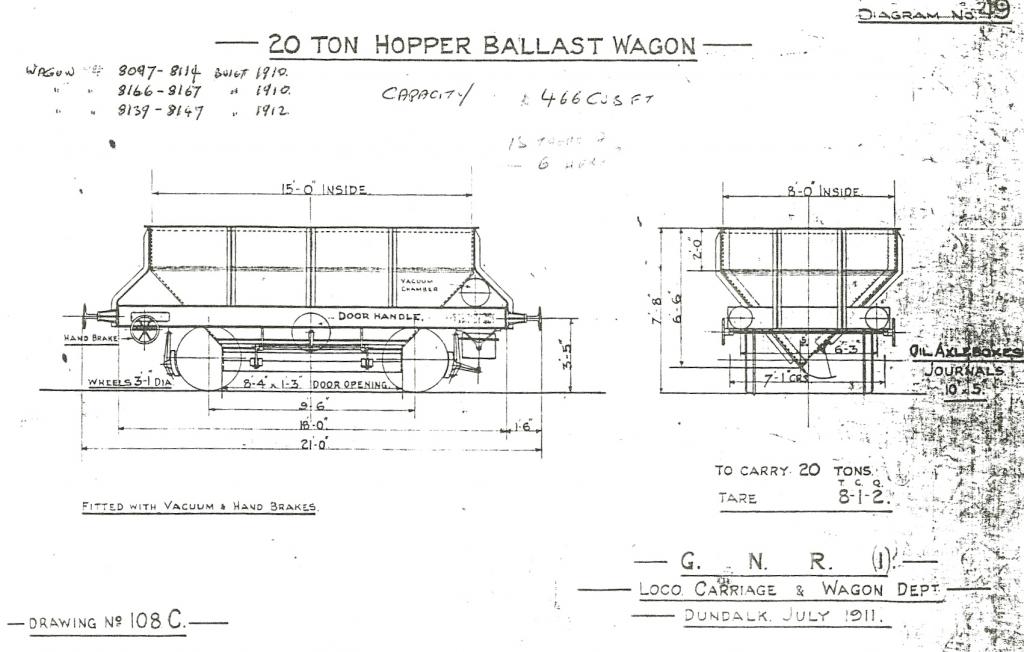
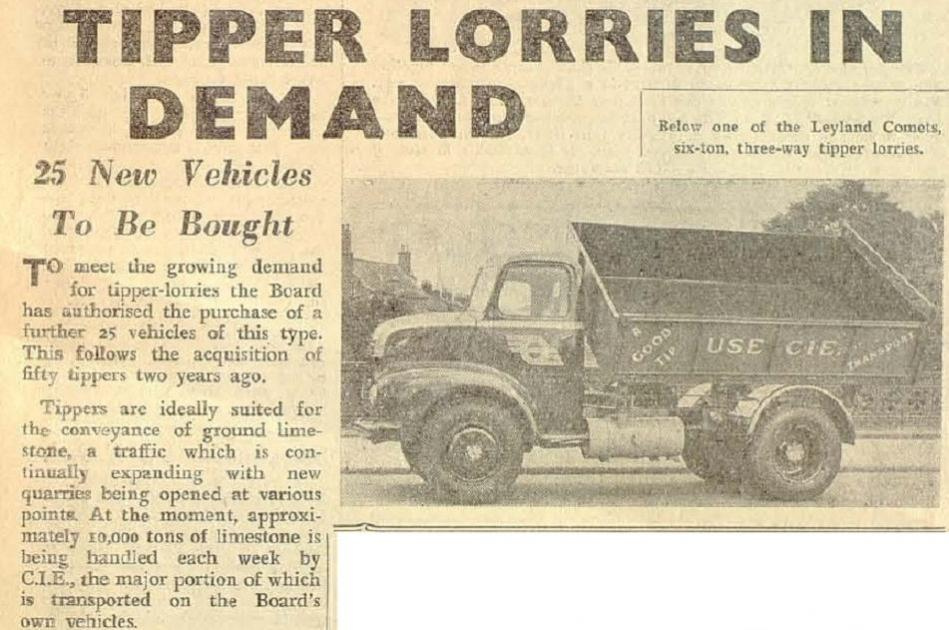
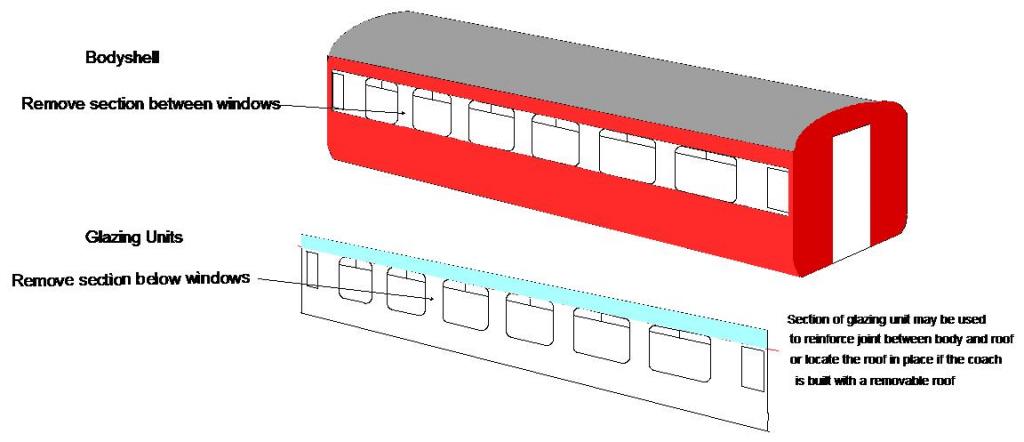

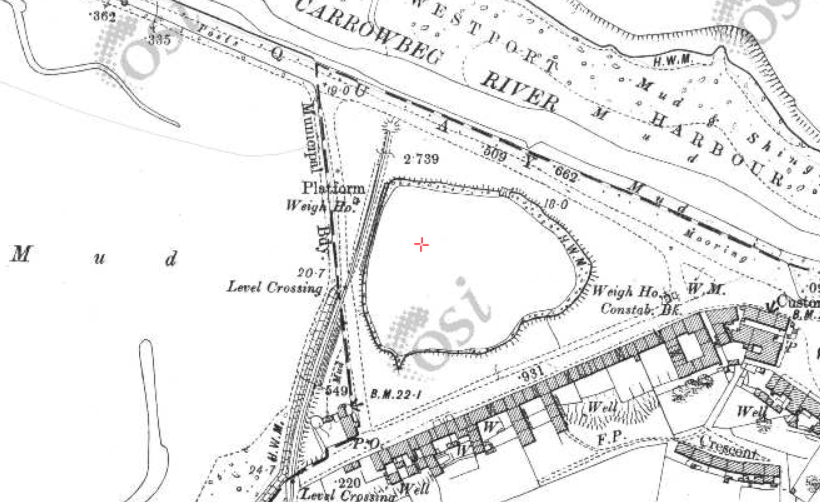
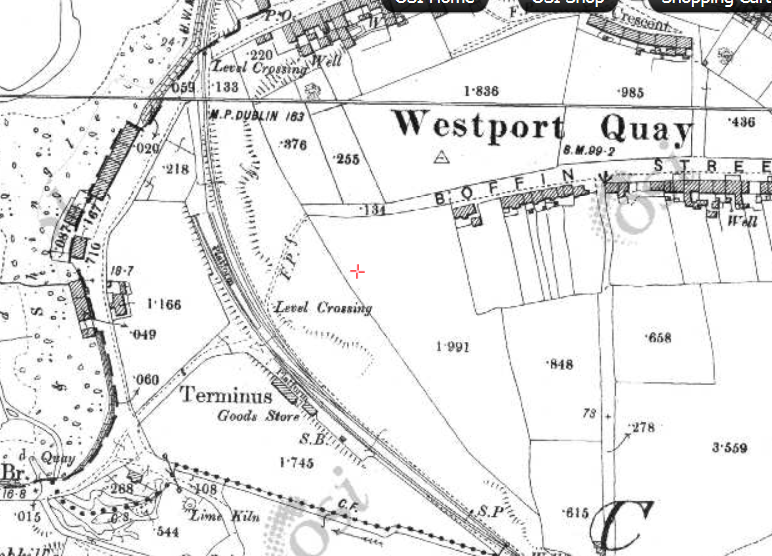

Macmine Junction
in Irish Model Layouts
Posted
Looks suspiciously like L Sullivan wonder have they chalked up the name of the buyer/dealer on the wagon? This would make more sense in an era when cattle were bought by a large number of individual dealers rather than a handful of large meat companies
Before the marts fairs like Puck, Ballinasloe, Loughrea and Roscommon could generate upwards of 100 wagons in 4 or 5 special trains. Many loading banks were long enough to load a train of 25-30 wagons minimising the need to shunt loaded wagons and risk of injury to livestock.